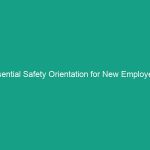Introduction
Good morning team,
Today, we’re going to focus on a crucial aspect of our Workplace Safety: Essential Tips to Secure Workpieces and Avoid Critical Safety Risks. Understanding how to properly secure workpieces is vital not just for the quality of our output, but also for safeguarding each one of you from potential Hazards. By the end of this talk, you’ll have practical strategies to enhance Safety and efficiency in our work Environment.
Understanding Essential Tips to Secure Workpieces
When we talk about securing workpieces, we refer to the methods and techniques used to hold materials in place during various operations, such as cutting, drilling, or welding. Properly securing workpieces is essential in preventing accidents that can lead to injuries or damage to equipment.
Many employees may think that securing workpieces is an optional step or that they can “wing it” depending on the situation. However, this mindset can lead to severe consequences, such as accidents that could have been easily avoided with proper Precautions.
Key Hazards, Risks, and Safety Considerations
It’s important to recognize the specific hazards associated with improperly secured workpieces. Some of these include:
- Slips and Falls: Loose materials can cause tripping hazards, leading to falls.
- Equipment Damage: Unsecured workpieces can shift unexpectedly, damaging tools and machinery.
- Injuries: The risk of physical injury increases significantly if a workpiece slips or moves during Operation.
Real-world consequences of ignoring these safety protocols can be severe. For instance, a worker may suffer lacerations or fractures from a flying tool or material if the workpiece is not properly secured. Such incidents can lead to lost workdays, increased insurance costs, and a decline in team morale.
Best Practices, Procedures, & Actionable Advice
Let’s dive into some Best Practices for securing workpieces effectively:
1. Use the Right Tools
Always use the appropriate clamps, vices, or fixtures designed for the specific material and task. Using the wrong tool not only compromises safety but may also damage the workpiece.
2. Inspect Your Setup
Before starting any operation, inspect your work area and setup. Ensure everything is properly aligned and secured. A quick check can save you from potential hazards.
3. Maintain a Clean Workspace
A cluttered workspace can lead to accidents. Ensure that your work area is tidy and free from unnecessary materials that could cause distractions or hazards during your tasks.
4. Practice Proper Lifting Techniques
When lifting heavy workpieces, always use proper lifting techniques. Bend your knees, keep your back straight, and ensure a stable grip. If a piece is too heavy, ask for assistance or use mechanical aids.
5. Be Aware of Your Surroundings
Always be conscious of your environment and other team members. Ensure that your actions do not endanger others and maintain communication with your colleagues while working.
6. Regular Training
Participate in regular safety training sessions and workshops. Being informed about the latest Safety Measures and updates in Procedures can significantly reduce risks.
Case Study: Real-World Incident
Let’s consider a real-world incident that highlights the importance of securing workpieces. At a manufacturing plant, a worker was operating a milling machine without properly securing the workpiece. During the process, the workpiece slipped, causing the machine to malfunction and resulting in a serious injury to the operator. This incident not only affected the injured employee but also disrupted production and led to financial losses for the company.
This case serves as a reminder that overlooking the basics can have dire consequences, underscoring the need for diligence in securing workpieces.
Regulations, Standards, and Compliance
Adhering to safety Regulations is non-negotiable. Regulations from organizations such as OSHA (Occupational Safety and Health Administration) outline clear guidelines on securing workpieces. Compliance with these Standards is critical as it not only protects you but also the entire workplace environment.
Failing to comply with regulations can lead to penalties for the organization, but more importantly, it can put your safety at risk. Always familiarize yourself with the safety standards relevant to your specific tasks and equipment.
Employee Engagement & Discussion
Now, let’s open the floor for discussion. What safety challenges have you encountered related to securing workpieces? Have you noticed any practices that could be improved? Your insights are invaluable in fostering a safer work environment.
Conclusion & Key Takeaways
In conclusion, securing workpieces is a fundamental aspect of Workplace Safety. By following the essential tips we discussed, you can significantly reduce the risk of accidents and injuries. Remember, safety is a shared responsibility, and by applying these practices, you contribute to a safer workplace for everyone.
Thank you for your attention and commitment to safety. Let’s prioritize securing workpieces to ensure we all return home safely at the end of the day.


